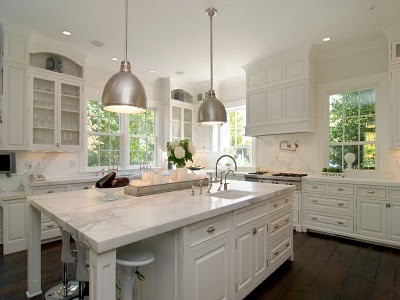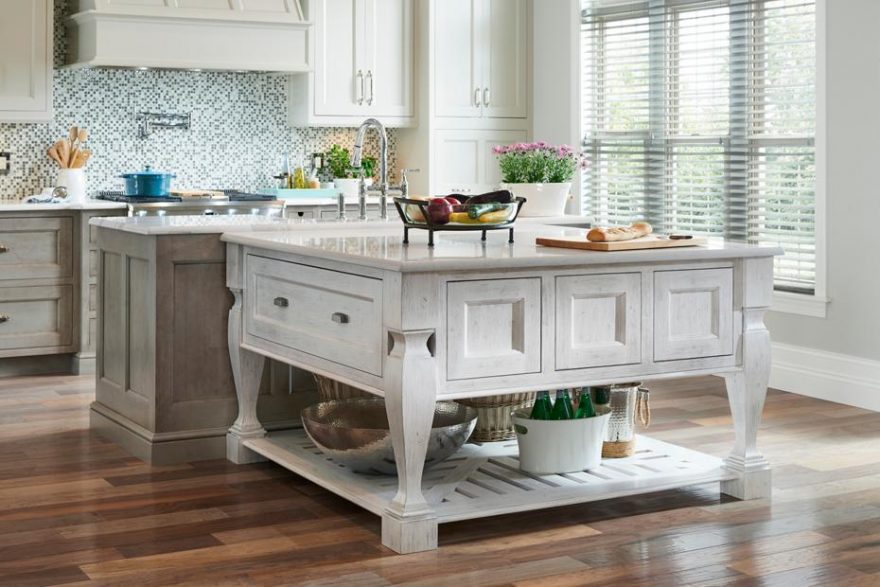Secret Factors To Consider for Locating the very best Legs For Kitchen Island for Your Design
When selecting the optimal legs for your kitchen island, several key factors to consider come right into play that can significantly influence both performance and aesthetics. The selection of material, design, and elevation should align with your overall kitchen area design to make sure a harmonious appearance. In addition, security and upkeep demands are crucial for long-lasting usage and convenience of treatment. Recognizing these aspects can boost your cooking area's practicality and aesthetic appeal, but the subtleties of each consideration can frequently be forgotten. What effects might these options have on your kitchen area's general atmosphere?
Determine Your Style Preference
Identifying your design preference is essential when choosing the excellent legs for your cooking area island. The legs of your kitchen area island not only serve a useful purpose however also contribute significantly to the general aesthetic of the space. Identifying your design style-- be it modern-day, rustic, conventional, or industrial-- is important.
For a modern cooking area, think about streamlined, minimalistic legs that complement clean lines and open areas. In comparison, a rustic setup might benefit from more durable, farmhouse-style legs made of redeemed products. Standard kitchen areas typically prefer transformed or ornate legs, which can add a touch of style and refinement. A commercial visual could call for steel legs that emphasize a raw, unfinished look.
Additionally, think about the height and proportion of the legs in relation to the island's surface. Inevitably, your style preference will certainly influence not only the choice of legs yet additionally the total harmony of your kitchen's design.
Pick the Right Material
Picking the ideal product for your kitchen area island legs is crucial in ensuring both resilience and aesthetic charm. Different products supply distinct advantages, and the selection frequently mirrors your design choices and useful requirements.
Wood is a prominent choice, giving heat and versatility. It can be discolored or repainted to match your kitchen decoration, making it versatile to different designs, from rustic to modern. Timber might require normal upkeep to maintain its appearance and honesty.

If you seek a distinct touch, take into consideration acrylic or glass materials. They can create an illusion of space and lightness in your cooking area, making them an outstanding choice for smaller areas - Legs For Kitchen Island. Nonetheless, these options might call for careful handling and maintenance to prevent scratches.
Inevitably, the material you choose should straighten with your kitchen area's general design, ensuring that the legs serve both decorative and functional objectives.
Consider Elevation and Proportions
When designing a cooking area island, height and percentages play a crucial function in ensuring capability and comfort. The basic elevation for a kitchen island usually varies from 36 to 42 inches, straightening with traditional counter heights or bar heights, specifically. This measurement is important for integrating with bordering feceses and counter tops, allowing convenience of use throughout dish preparation and social communications.
In addition, the island's percentages should match the general cooking area design. A well-proportioned island needs to not bewilder the space; rather, it should develop a balanced visual. Consider the ratio between the island's width and length, guaranteeing it gives ample surface without crowding the kitchen. A basic guideline is to maintain a width of 24 to 48 inches, helping with movement and ease of access.
Additionally, the height of the legs or base can affect the aesthetic allure and functionality. Taller legs may offer a more modern-day, airy feel, while shorter ones can evoke a conventional, grounded appearance. Ultimately, meticulously considering elevation and percentages will certainly official site result in a kitchen area island that is both functionally reliable and aesthetically appealing, improving the total layout of the space.
Assess Stability and Longevity
A kitchen island's legs should not only match its height and proportions yet likewise provide adequate stability and longevity to support day-to-day tasks. The legs are essential to the general functionality of the island, as they bear the weight of the my review here countertop and any kind of added tons, such as devices or food prep work tasks.
When analyzing stability, it is essential to consider the leg design and product. Strong metal or solid hardwood legs usually supply remarkable strength contrasted to lighter products like engineered timber or plastic. In addition, a larger base can boost stability, lowering the risk of wobbling or tipping throughout use.
Sturdiness is equally important; the legs need to resist deterioration from everyday usage. Consider finishes that safeguard against scratches, dents, and moisture, specifically in a kitchen atmosphere. In addition, examine the high quality of building, such as attachments and joints, which can substantially affect the legs' long-term performance.
Ultimately, purchasing well-crafted legs that focus on security and durability will ensure your kitchen island remains a reputable work area for many years to find, enhancing your cooking experiences while preserving visual charm.
Consider Upkeep and Care
Upkeep and care are vital factors to consider for guaranteeing the longevity and performance of kitchen island legs. When choosing my site legs, it is necessary to examine the products made use of, as various alternatives need differing levels of maintenance. Wooden legs might call for routine refinishing or sealing to avoid wetness damages and scrapes, while metal legs may need regular polishing to keep their shine and protect against rust.
Moreover, the finish put on the legs can influence maintenance requirements. A high-gloss finishing may be simpler to tidy however could reveal finger prints and scrapes quicker than a matte surface. It is suggested to select products and coatings that match your lifestyle; as an example, if you often hold events, choose long lasting products that can withstand wear and tear.
In addition, think about the cleansing procedure associated with keeping these legs. Smooth surface areas usually require marginal initiative, while complex designs may gather dust and crud, demanding more labor-intensive cleansing methods. Legs For Kitchen Island. Eventually, considering the upkeep and treatment required for your picked kitchen area island legs will not just enhance their aesthetic appeal however also ensure their practical honesty with time
Final Thought
Finally, choosing the optimal legs for a cooking area island necessitates cautious consideration of various aspects, including layout style, material choice, elevation, maintenance, and security. Each component plays a critical role in making sure that the legs not just boost the visual charm of the kitchen however also offer the needed assistance and durability for everyday use. A well-informed decision will eventually add to a practical and visually pleasing kitchen atmosphere.
The legs of your kitchen island not only offer a functional function yet likewise contribute substantially to the total visual of the area.Maintenance and treatment are important considerations for making certain the durability and performance of kitchen area island legs. Wooden legs might need periodic refinishing or sealing to avoid moisture damages and scrapes, while metal legs may need regular brightening to maintain their shine and stop corrosion.
Ultimately, factoring in the upkeep and care needed for your picked kitchen island legs will certainly not only improve their visual allure but additionally ensure their practical stability over time.

 Edward Furlong Then & Now!
Edward Furlong Then & Now! Macaulay Culkin Then & Now!
Macaulay Culkin Then & Now! Talia Balsam Then & Now!
Talia Balsam Then & Now! Phoebe Cates Then & Now!
Phoebe Cates Then & Now! Stephen Hawking Then & Now!
Stephen Hawking Then & Now!